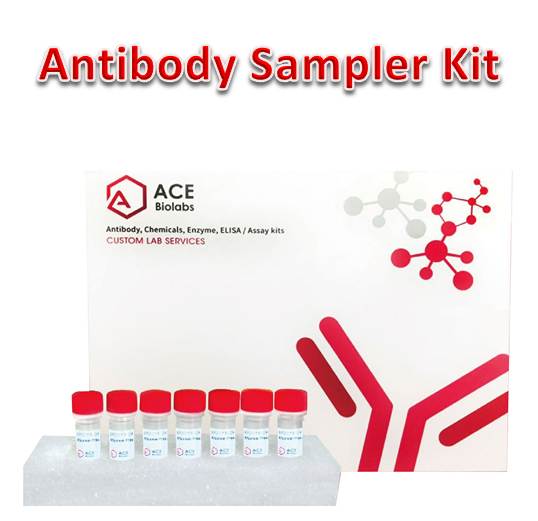Antibody, Antibody Sampler Kit
Alzheimer's Disease Antibody Sampler Kit
- Catalog Number : AK0112
- Number :
-
Size:
Qty : - Price : Request Inquiry
Introduction
Alzheimer's Disease (AD) is one of the most common neurodegenerative diseases worldwide. Clinically, it is characterized by the presence of extracellular amyloid plaques and intracellular neurofibrillary tangles, which results in neuronal dysfunction and cell death. Central to this disease is the differential processing of the integral transmembrane glycoprotein Amyloid β (A4) precursor protein (APP) that exists as several isoforms. The amino acid sequence of APP contains the amyloid domain, which can be released by a two-step proteolytic cleavage. β-secretase (BACE) is an aspartic acid proteinase that catalyses the initial step in APP processing by cleaving and releasing a soluble, extracellular APP-β (sAPPβ) ectodomain and generating a membrane-bound, carboxy-terminal fragment consisting of 99 amino acids (CTF99). Additional processing of CTF99 by γ-secretase generates the amyloid β-peptide (Aβ) that forms aggregates in the brains of AD patients. BACE is an attractive target for inhibitors in AD therapy since it catalyses the first and rate limiting step in amyloidogenic APP processing. Pro-BACE-1 is synthesized in the ER before it is transported to the trans-Golgi network to undergo maturation. The extracellular deposition and accumulation of the released Aβ fragments and an α-synuclein fragment known as the non- Aβ fragment, form the main components of amyloid plaques in AD. GSK-3α regulates the production of Aβ peptides. Administration of therapeutic concentrations of lithium, a GSK-3 inhibitor, attenuates Aβ production by specifically inhibiting the cleavage of APP by γ-secretase, thereby blocking accumulation of Aβ peptides in the brains of mice that overproduce APP. AD is also characterized by the presence of neurofibrillary tangles. These tangles are the result of hyperphosphorylation and oligomerization of the microtubule associated protein Tau and lead to apoptosis of the neuron. In particular, phosphorylation of Tau Ser396 by GSK-3 or CDK5 destabilizes microtubules in AD. Additionally, neurofilaments
General Information
| Reactivity | Human, Mouse, Rabbit |
|---|---|
| Application | WB, ELISA |
| Host | Rabbit |
| Clonality | Polyclonal |
| Conjugate | HRP,Non-conjugated |
| Storage instruction | Store at -20℃. Avoid freeze / thaw cycles. |
| Research topic | Alzheimer's Disease; Neuroscience |
Product Includes
| Product name | Quantity | Applications | Reactivity | Host |
| Neurofilament Polyclonal Antibody | 20μL | WB,ELISA | Human, Mouse, Rat | Rabbit |
| Tau Polyclonal Antibody | 20μL | WB,ELISA | Human, Mouse, Rat | Rabbit |
| BACE1 Polyclonal Antibody | 20μL | WB,ELISA | Human, Mouse, Rat | Rabbit |
| SNCA Polyclonal Antibody | 20μL | WB,IHC,IF,ELISA | Human, Mouse, Rat | Rabbit |
| GSK3 alpha Polyclonal Antibody | 20μL | WB,IHC,IP,ELISA | Human, Mouse, Rat | Rabbit |
| Phospho-GSK3 alpha (Ser21) Polyclonal Antibody | 20μL | WB,IHC,IP,ELISA | Human, Mouse, Rat | Rabbit |
| GSK3 alpha/beta Polyclonal Antibody | 20μL | WB,IHC,ELISA | Human, Mouse, Rat | Rabbit |
| GSK3 beta Polyclonal Antibody | 20μL | WB,IHC,IP,ELISA | Human, Mouse, Rat | Rabbit |
| Goat Anti-Rabbit IgG (H+L)(peroxidase/HRP conjugated) | 120μL | WB,ELISA |







.png)